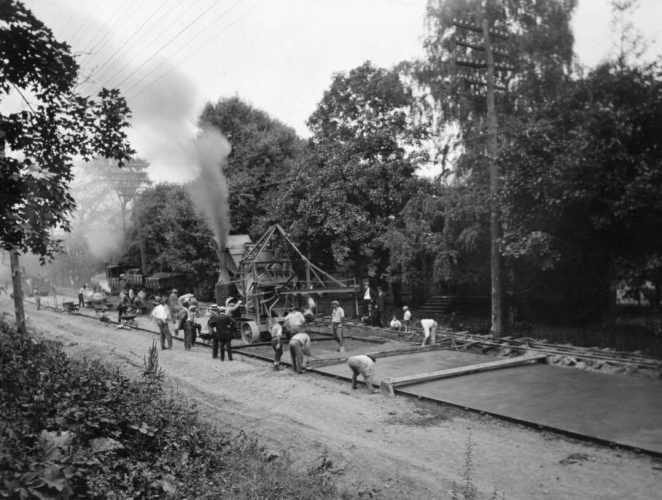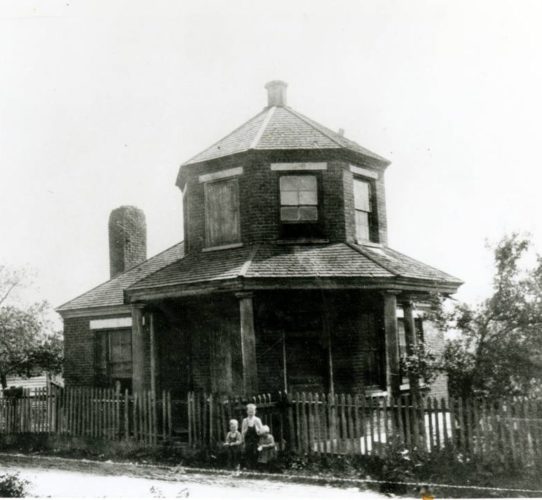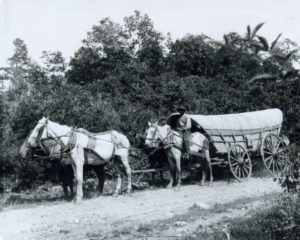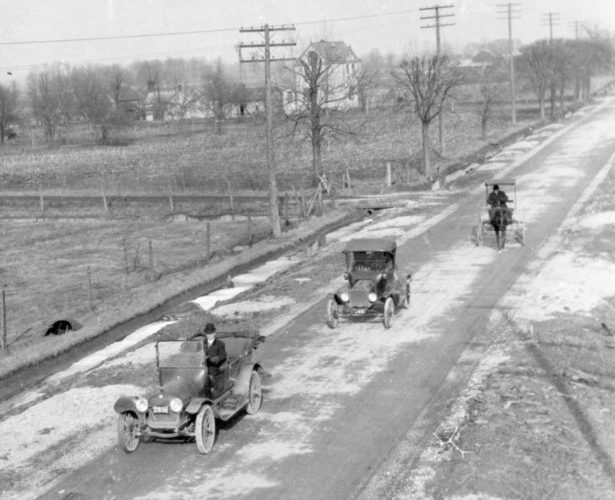Paving the Way: Ohio and the National Road

When Thomas Jefferson signed the enabling act that authorized residents of the Ohio Territory to take steps toward statehood in 1802, that legislation included a provision allowing the government to use a percentage of the net proceeds from federal land sales in the future state to build roads from the East to and through Ohio. This clause was the brainchild of Jefferson’s treasury secretary, Albert Gallatin, and it laid the groundwork for the first federally funded multi-state road in the U.S.
Jefferson authorized actual construction of the road four years later, in 1806. The National Road (also called the Cumberland Road, the National Pike, and the National Trail) was originally designed to connect the East Coast to the Ohio River. The chosen path sometimes followed American Indian or early settlers’ trails or military roads dating back to the French and Indian War.

Construction began in Cumberland, Maryland, in 1811. (Private toll roads and turnpikes were built to connect Cumberland to the port city of Baltimore, effectively extending the road to the sea.) The road ran through Maryland and Pennsylvania to reach Wheeling, Virginia (now West Virginia), in 1818. From there, the road entered Ohio at Bridgeport and passed through Belmont, Guernsey, Muskingum, Licking, Franklin, Madison, Clark, Miami, Montgomery, and Preble Counties before exiting the state almost 230 miles later near Richmond, Indiana. The road’s western terminus was Vandalia, Illinois (capital of the Illinois Territory), although an extension was built connecting Vandalia to East St. Louis, Illinois, and the Mississippi River.
In the mid-1830s, the federal government began transferring ownership of the road to the states through which it passed in order to reduce federal spending; the Panic of 1837 provided further incentives to cut costs. Congress’s final appropriation for the National Road was in 1838, at which point, in total, the federal government had spent nearly $6.8 million on the project. Some states, including Ohio, built toll houses like the one seen above along the road to help defray maintenance expenses that were now their responsibility.

Despite some difficult economic times, the 1840s were peak travel years on the National Road. Conestoga wagons hauled freight, while roadside inns and taverns catered to hungry and thirsty stagecoach passengers. However, by the 1850s, steam locomotives were becoming more efficient and more popular, and by the 1860s travel on the road had diminished so much that stagecoach lines went out of business and once-busy taverns were converted into private homes. By the 1870s, most states had delegated maintenance duties to local authorities, and the road fell into disrepair.
However, the National Road experienced a rebirth with the bicycling craze of the late 1800s and the growth of the automobile in the early 1900s. Touring became a popular activity, and the National Road’s original sand and gravel surfaces were repaved for auto use as pictured in the photograph at the top of this post.

In 1921, the Federal Highway Act authorized the construction of interstate highways, and large portions of the National Road were incorporated into US Route 40. By the 1940s, travelers saw buses, trucks, restaurants, and motels instead of the coaches, wagons, taverns, and inns of the previous century. With the Federal-Aid Highway Act of 1956 and the creation of I-70, reaching a destination quickly became more important than experiencing the journey, and focus once again shifted away from the National Road.
The National Road had a major impact not only in increasing trade between Ohio and the eastern seaboard, but also in opening up the Ohio River Valley and the land beyond to settlement. Although its role as a major transportation route is done, today Maryland, Pennsylvania, Ohio, Indiana, and Illinois all have government or nonprofit associations that focus on preserving and promoting the road and its history.
Thank you to Stephanie Michaels, Research and Catalog Services Librarian at theState Library of Ohio, for this week’s post!



Leave a Reply
You must be logged in to post a comment.